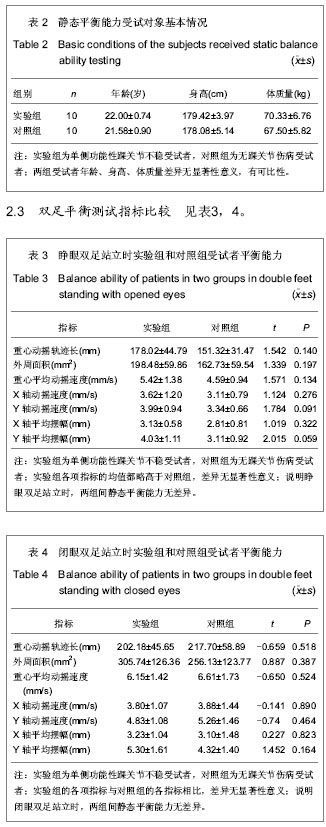| [1] 李文彬,门高利,王德明.人体平衡功能测试系统研究进展[J].人类工效学,2000,6(3):46-50. [2] 张胜年,林中宝,袁泳虹,等.背向行走训练对老年人静态平衡能力及步态的影响[J].中国运动医学杂志,2008,27(3):304-307. [3] 李祥晨,李晓辉,肖书明,等.人体重心平衡能力测量分析与虚拟训练系统BestPoise v1.0的开发[J].首都体育学院学报,2005, 17(1): 22-24. [4] Hrysomallis C,McLaughlin P,Goodman C.Does a balance deficit persist in Australian football players with previous lower limb ligament injury?.J Sci Med Sport.2005;8(1):85-91. [5] Kaminski T, Perrin D. Eversion Strength Analysis of Uninjured and Functionally Unstable Ankles. Journal Of Athletic Training. 1999;34(3):239. [6] 虞定海,王三,杨慧馨,等.24周太极拳锻炼对中老年人静态平衡功能的影响[J].中国运动医学杂志,2011,30(12):1115-1119. [7] 庞丹丹.太极拳运动对中老年人静态平衡能力影响的实验研究[D].上海体育学院,2011. [8] 张丽,瓮长水,王秋华,等.前庭感觉、本体感觉及视觉功能对老年人跌倒风险影响的因素分析[J].中国康复理论与实践,2010, 16(1):16-18. [9] Lord SR,Sturnieks D.The physiology of falling: assessment and prevention strategies for older people. J Sci Med Sport. 2005;8(1):35-42. [10] 张建国,谭明义,毛文慧.中老年人静止站立时平衡机能研究[J].中国运动医学杂志,2008,27(5): 604- 607. [11] 《人体测量与评价》编写组,《人体测量与评价》[M].高教出版社.2009:232-238. [12] 卓大宏.中国康复医学[M].2版.北京:华夏出版社,2003:10. [13] 张秋霞,张林,王国祥,等.功能性不稳踝关节位置觉和肌肉力觉特征[J].中国运动医学杂志,2012,31(1):9-13. [14] Keskin D,Borman P,Ersöz M,et al.The risk factors related to falling in elderly females.Geriatr Nurs,2008;29(1):58-63. [15] 姚波,金建明,霍文憬,等.老年人下肢伸膝肌力对平衡能力的影响[J].中华物理医学与康复杂志,2006,28(7):466-468. [16] Ross S,Guskiewicz K,Gross M,et al. Balance measures for discriminating between functionally unstable and stable ankles. Med Sci Sport Exercise.2009; 41(2):399-407. [17] Ross S, Guskiewicz K. Examination of static and dynamic postural stability in individuals with functionally stable and unstable ankles.Clin J Sport Med.2004; 14(6):332-338. [18] 山神真一.剑道高段位者立位姿势时的重心移动[J].(日)香川大学教育学部研究报告,1991,(82):203-212. [19] 郭丽敏,迟放鲁.人体倾角姿态图对姿势平衡的定量研究[J].中华耳鼻咽喉头颈外科杂志,2003,17(1):580-582. [20] Diane Madras, J. Bradley Barr . Rehabilitation for Functional Ankle Instability. JSR. 2003;12(2):133-142. [21] Hrysomallis C, McLaughlin P, Goodman C. Relationship between static and dynamic balance tests among elite Australian footballers.J Sci Med Sport.2006;9:288-291. [22] Lin WH, Liu YF, Hsieh CC,et al.Ankle eversion to inversion strength ratio and static balance control in the dominant and non-dominant limbs of young adults. J Sci Med Sport. 2009; 12(1):42-49. |





